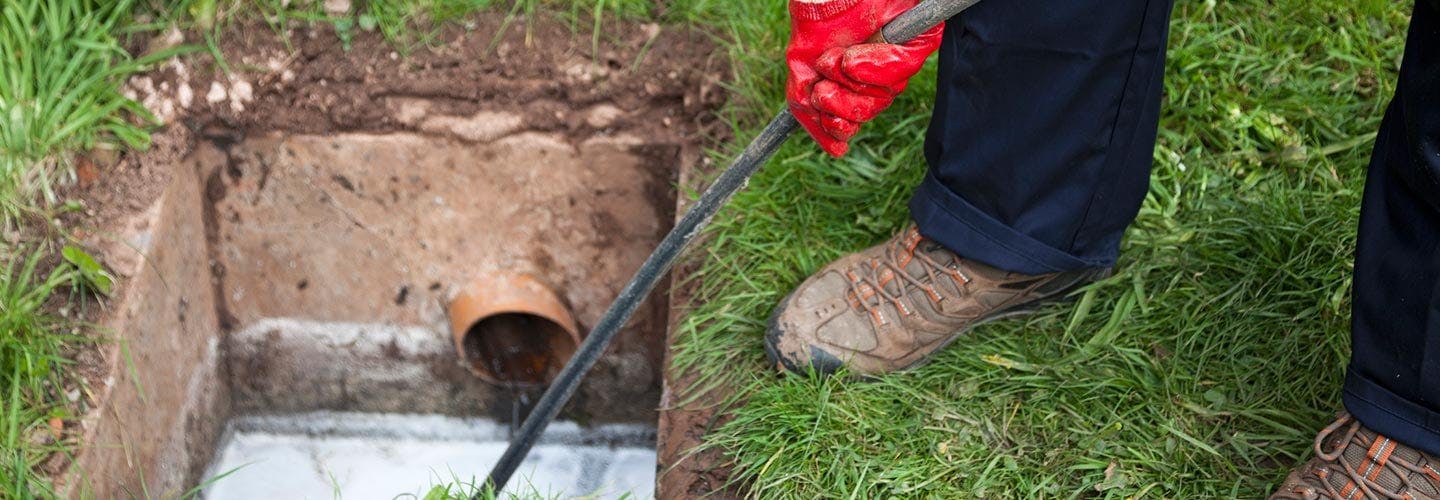Sewer backup prevention: Six tips to save frustration
- Coverage clarity
- Planning ahead
- Homeowners insurance

Few things are worse than waking up to sewage in your home. It’s not pleasant to think about, but a little prevention goes a long way.
What is a sewer backup?
If your plumbing is working as it should be, the sewer pipes in your home will regularly carry dirty water out. This water could come from your sinks, your shower or your toilet, but unfortunately, sometimes the system breaks down. We call that sewer backup, also known as sewage backup.
Put simply, sewer backups are when a pipe breaks or gets clogged and wastewater is blocked or unable to leave your house. This can lead to every homeowner’s worst nightmare: flooding, and wastewater flooding at that.
Water damages everything it touches – floors, walls, furniture and electrical infrastructure. Now that you know what it is, you need to know how to prevent sewer backup and protect your home, yourself and your family.
Common causes of sewer backups
There are several common causes of sewer backups that can explain plumbing problems:
- Aging sewer systems. How old is too old? Well, that depends on the kind of pipes you have. A good rule of thumb is to expect about 50-60 years from clay pipes and up to 100 years for cast iron or PVC.
- Combined pipelines. This is exactly what it sounds like. These combine your home’s sewage as well as rainwater, or storm runoff. It’s unlikely, but not impossible, for you to have this type of pipeline at home.
- Sanitary main blockages. For better or worse, these blockages are out of your hands. They occur somewhere past your home, after your wastewater has combined with that of your neighbors. Your city is responsible for these pipes and their repairs.
What type of insurance covers sewer backups?
Whether or not your home is in a major flood zone, there’s still cause to be concerned about flooding from sewage backup. In fact, most home floods that occur are located outside of a flood zone.
One of the questions we get the most is, if you were unable to prevent a sewer backup, will your insurance policy cover it? And unfortunately, the answer is: not likely.
Sewer backup typically isn’t covered by a homeowners or flood policy. You can have a water/sewer backup endorsement added to the policy that will cover these problems and, while it does cost more, it’s a minimal increase that generally gets you $5-$25,000 in coverage.
There is some good news though. Homeowners insurance may provide Loss of Use Coverage that can be used to take care of living expenses like food and lodging should your home be deemed uninhabitable for some types of sudden and accidental water damage, though you will need a special rider to pay for the damages and repairs resulting from sewage backup.
Rest easy with the right homeowners insurance
Sewer backup prevention tips
Regardless of whether or not you have insurance coverage for sewer backup, it’s preferrable to prevent it from happening. These six tips can help keep your pipes flowing freely and, even if you do just one, you’ll be ahead of the game.
- Maintain your sewer lateral – This is the sewer pipe between your house and your city’s sewer main. A lateral pipe that’s cracked, deteriorated or filled with tree roots risks allowing groundwater to get in.
- Dispose of grease properly – Don’t pour cooking oil or grease down the drain. When it cools off, it will solidify either in your drain or in the main sewer line, causing a clog.
- Dispose of paper products properly – Items like paper towels, diapers and feminine products can clog the sewer line.
- Consider plastic piping – Tree roots can’t break through plastic piping, so using PVC pipes erases the possibility of at least one sewer backup cause – and they last longer!
- Correct illegal plumbing connections – Depending on where you live, it may be illegal to connect French drains, sump pumps and other flood control systems to your sewer. However, that doesn’t mean the previous owner didn’t put them in. These illegal connections can cause debris and silt to clog your sewer line.
- Consider a backwater prevention valve – Installed onto the sewer line in your basement, a backwater valve allows sewage to go out but not back in. When installed and maintained correctly, it can serve as a final line of defense in sewer backup prevention.
How to recover from sewer backup
If you do experience sewage backup, the best thing you can do is start cleaning as soon as possible. Quick cleanup of affected areas will help prevent further damage to your home and minimize destruction to your interiors and valuables. Consider hiring a reputable clean-up crew to clear out the water, clean floors and walls, steam clean or remove wet carpet and drapes and clear out all ductworks. You’ll also want to flush out and disinfect plumbing fixtures to ensure there’s no more blockage.
VIU can help you prepare for a flood or sewer backup damage
Worried about your risk? Contact your VIU by HUB Advisory Team to figure out if you’re properly covered for flood and sewer backup.